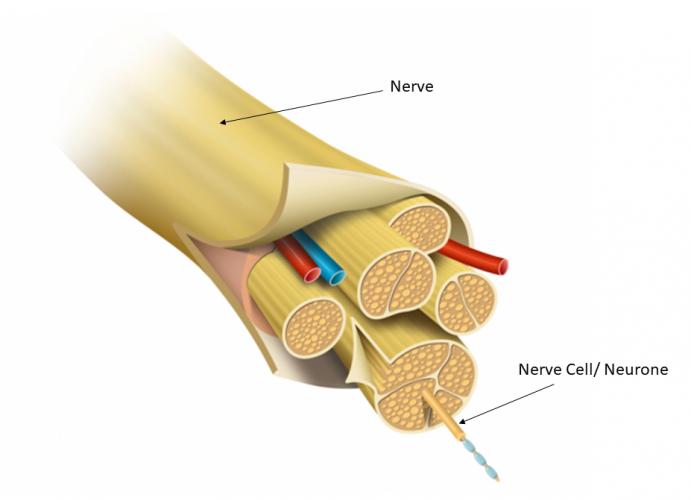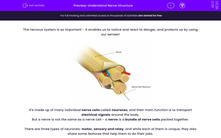The nervous system is so important - it enables us to notice and react to danger, and protects us by using our senses!

It's made up of many individual nerve cells called neurones, and their main function is to transport electrical signals around the body.
But a nerve is not the same as a nerve cell - a nerve is a bundle of nerve cells packed together.
There are three types of neurones: motor, sensory and relay, and while each of them is unique, they also share some features that help them to do their jobs.
.jpg)
| Motor Neurones | Sensory Neurones | Relay Neurones |
|
FUNCTION: Motor neurones carry signals from the brain or spinal cord to the target organs and muscles in order to perform an action.
|
FUNCTION: They detect changes in our environment, or stimuli, from loud noises to temperature changes, and carry this information around the body to the brain or spinal cord. |
FUNCTION: They help pass information between the sensory neurones and the motor neurones. |
|
STRUCTURE: Neurones have a cell body with branches called dendrites which communicate with other cells. The cell body leads to the axon, a long fibre that guides the signal to its destination, and the neurones end with more branches called axon terminals. Important Note: Dendrites are not axon terminals!! Dendrites are on the cell body and axon terminals are on the other end of the neurone after the axon. |
STRUCTURE: Sensory neurones have specialised cells called receptors around the body that detect stimuli, and so sensory cells have no dendrites.
Also, their axons are short. |
STRUCTURE: Their structure is very similar to motor neurones, although their dendrites are short and their axons can be long or short!
|
Synapses
Neurones need synapses to communicate and pass along the electrical signals, allowing the axon terminals of one nerve cell to pass on information to the dendrites of the next cell.
Electrical signals can't pass through the air, so in the axon terminal, it's converted into specific chemicals called neurotransmitters.
.jpg)
So let's put everything together - what happens when you touch something sharp?
1. Sensory receptors detect pain in the skin cells of your finger.
2. An electrical signal is made and travels down the sensory axon to the axon terminals.
3. Here, the sensory axon terminals synapse with a relay neuron using specific neurotransmitters.
4. The relay neurone carries the signal and then synapses with a motor neurone.
5. A motor neurone then takes the electrical signal to the muscles of the finger and makes them contract so you move away from the stimulus.
Phew - what a lot to remember! Let's move on to the questions now to see how much you can recall!








